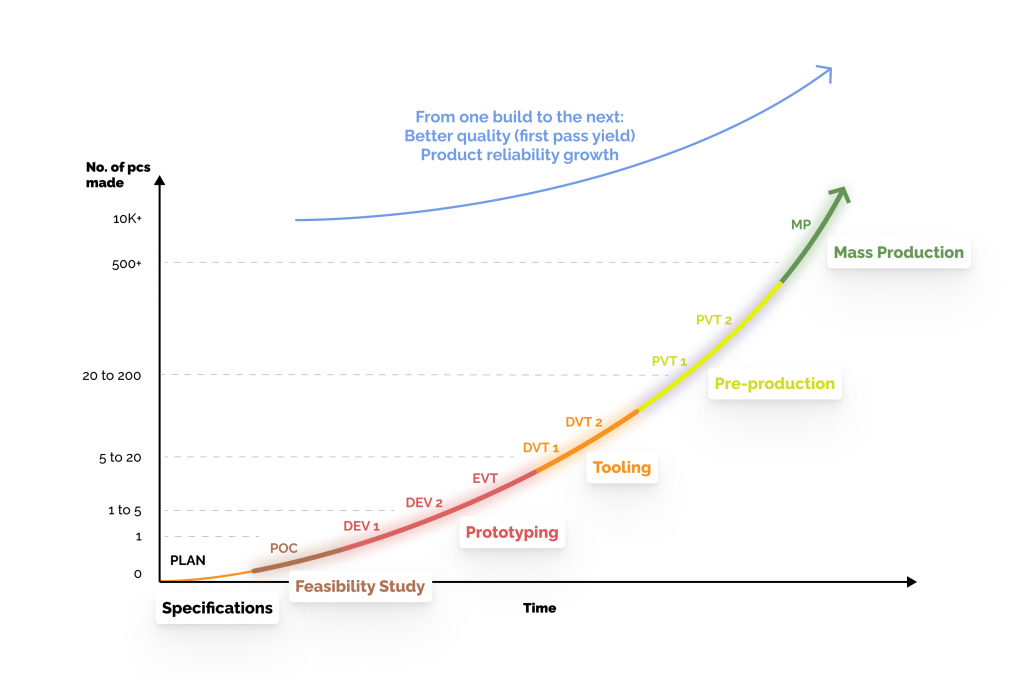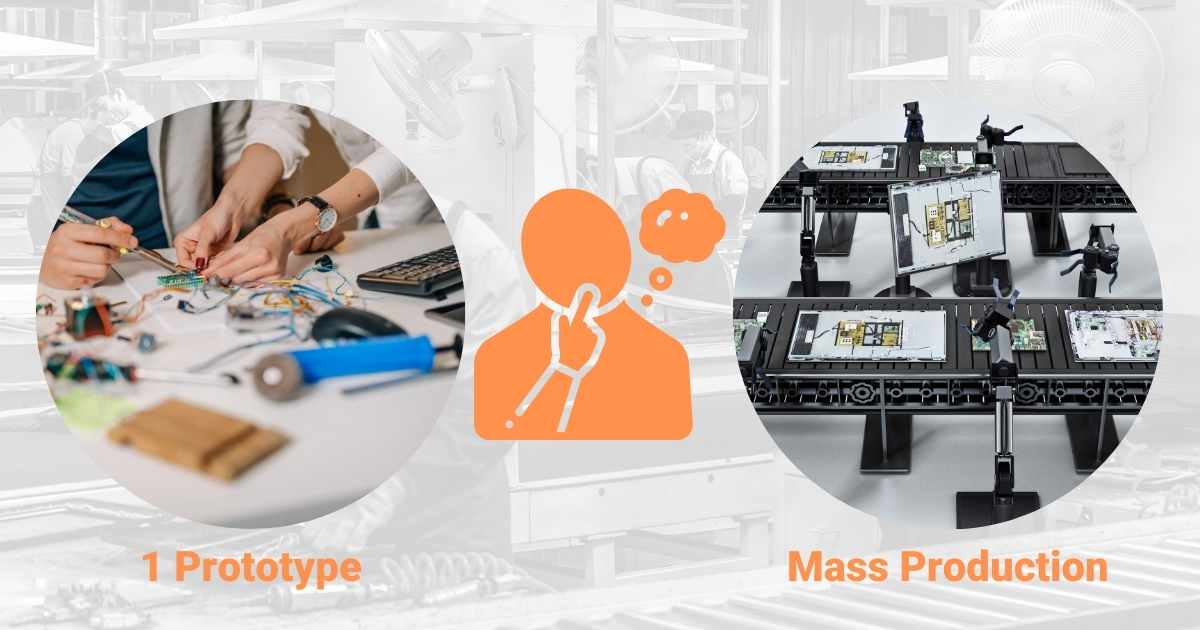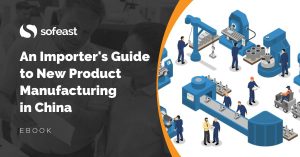“Can we go directly from 1 prototype to mass production? After all, if they can make 1 good piece, surely they can make 10,000 good pieces?”
Well, not really.
When it comes to 3D printed parts or a product that comes entirely out of a mold, that might work.
But, when different fabrication processes are involved to create custom parts (e.g. extruding the aluminum enclosure in just the right shape) and make them look nice (e.g. powder-coating it in just the right shade of grey), it gets much more complicated.
I have seen painting operations go from “we are confident, this will go well” to “we are not sure why we only have a yield of 30%, and why the other 70% need serious rework”.
And when this new product has to be assembled, tested, and packed, these operations may come with an even higher number of potential issues. In some cases, not a single product even gets to the end of the line – they are all found nonconforming and rejected somewhere along the testing stations and go/no go gauges.
Why follow a structured New Product Introduction process?
If you have been following this blog for some time, you have already read my advice about following a process (often called the NPI process) with the right verifications & validations along the way.
(As a reminder, here is a < 10 min video where I walk you through our version of the NPI process.)
How many pieces make sense at each stage of the process?
The question then is, how many pieces make sense at each stage?
For new electro-mechanical products, the answer often looks like this:
- Early prototypes, when the mechanical and electronic engineers are working, can be made 1 or 2 at a time.
- When prototypes get closer to final approval, they might have to be made in larger numbers to allow for more testing. At this stage, it is user testing and accelerated reliability & durability testing (to find what the weaknesses are).
- Toward the end of the development phase, when fully functional prototypes are put together, comes “engineering validation testing”. Those samples are quite expensive, they are often made from 3D printed parts, boards soldered by hand, etc., all done by a few R&D engineers.
- When it comes to getting tooling made and confirming that the parts can be made with the right color, material, and finish, the team has to do “design validation testing”. For example, for a plastic enclosure that is injection molded, the plastic workshop does about 20 shots, and the mechanical engineer will check them carefully. All those parts might be assembled into finished products, too, for further testing & feedback.
- If there are issues that are not critical, the next “batch” is typically a bit larger. That’s the general logic — keep pushing against all limitations.
- Once the project is in the “production validation testing” phase, which we simply call pre-production preparation, the batches are larger. It might start at 50 pcs for a relatively small and simple product, or at 20 pcs for a larger & more complex product. There are going to be issues, of course, in the manufacturing, but also the testing processes. The next batch might be 2 or 3 times larger, and so on and so forth, until manufacturing readiness is confirmed.
- At that stage, mass production officially starts. It may start with the first batch of 1,000 pcs or maybe even 5,000 pcs, and if there is strong demand from the market those quantities will keep growing over time, as the factories ramp their capacity up.
Here is a simplified representation of this whole logic (you can see by the increasing number of pieces made over time before production starts that it’s not as simple as just going from one prototype to mass production):
(Click on the image to enlarge it)
I am trying to recall cases where the first mass production went well. There are, of course, cases where production runs go well — inspectors can’t find many defects, users are happy and don’t return the goods — but in all of those cases, the development process had been approached in a structured and systematic manner.
How about you, what have your experiences been of going from prototype to mass production? Let me know, please.
Are you designing, or developing a new product that will be manufactured in China?
Sofeast has created An Importer’s Guide to New Product Manufacturing in China for entrepreneurs, hardware startups, and SMEs which gives you advance warning about the 3 most common pitfalls that can catch you out, and the best practices that the ‘large companies’ follow that YOU can adopt for a successful project.
It includes:
- The 3 deadly mistakes that will hurt your ability to manufacture a new product in China effectively
- Assessing if you’re China-ready
- How to define an informed strategy and a realistic plan
- How to structure your supply chain on a solid foundation
- How to set the right expectations from the start
- How to get the design and engineering right
Just hit the button below to get your copy (please note, this will direct you to my company Sofeast.com):


